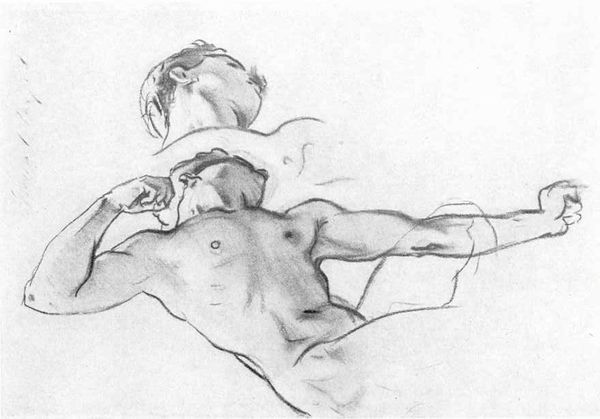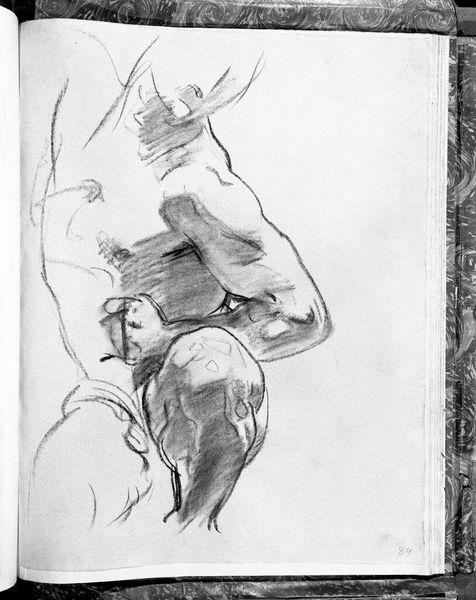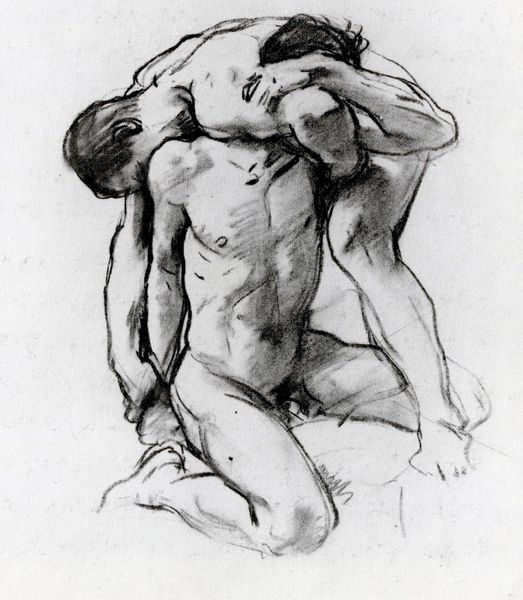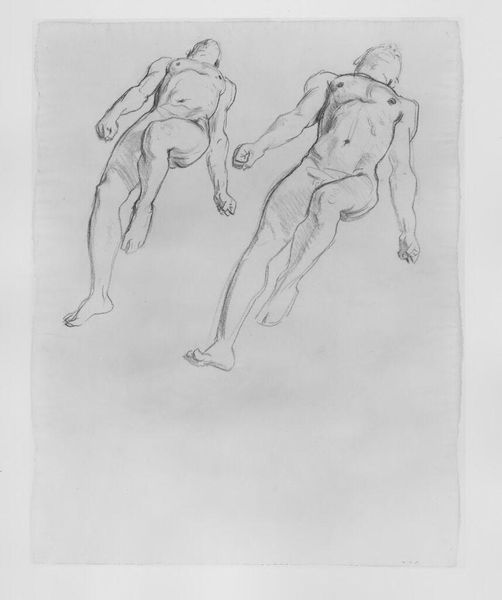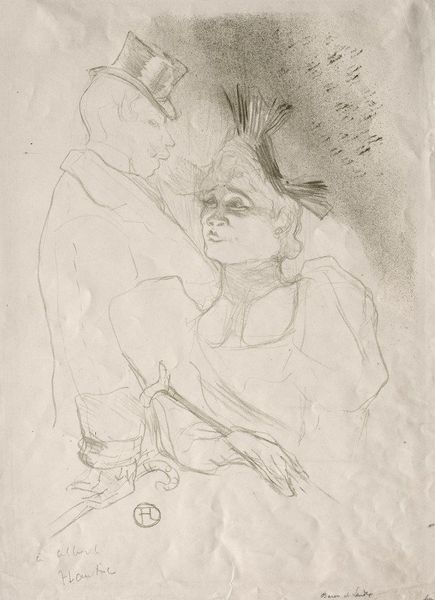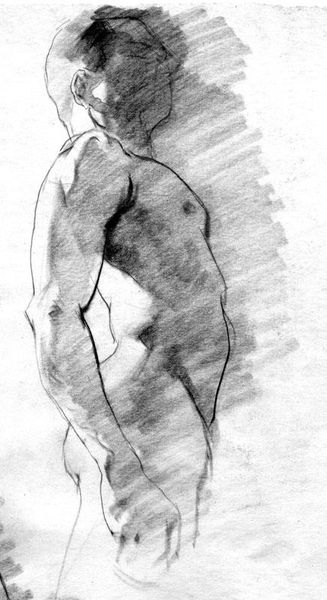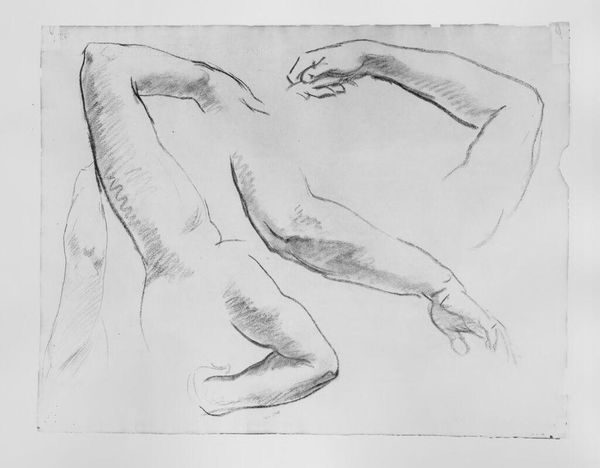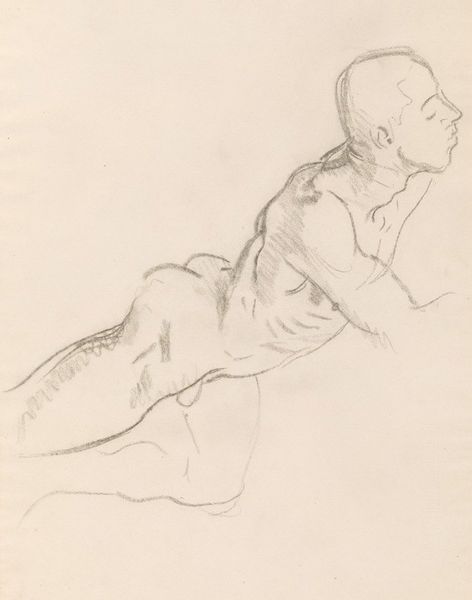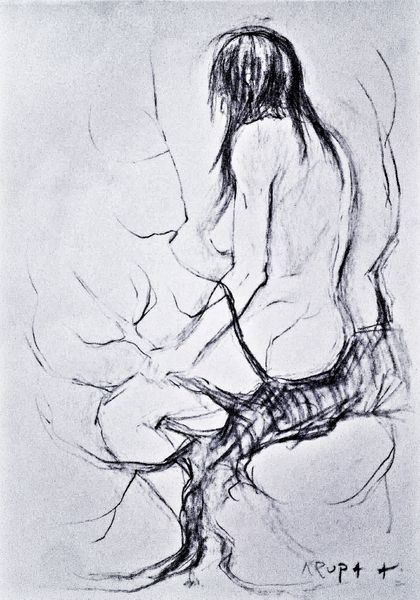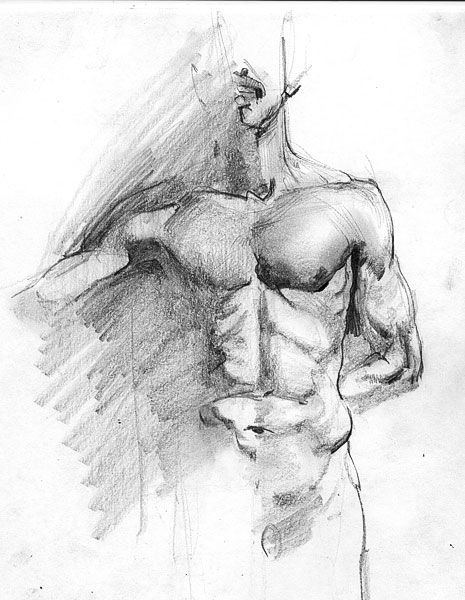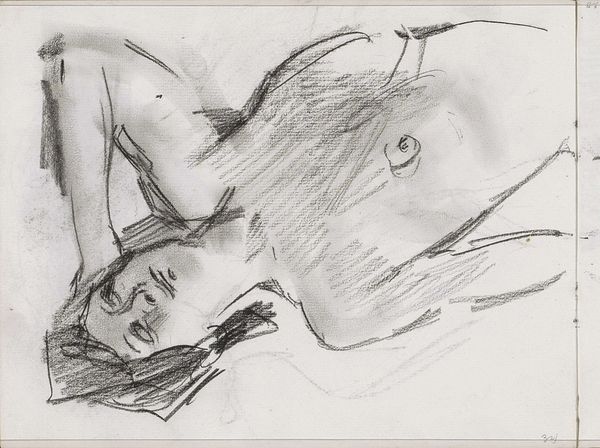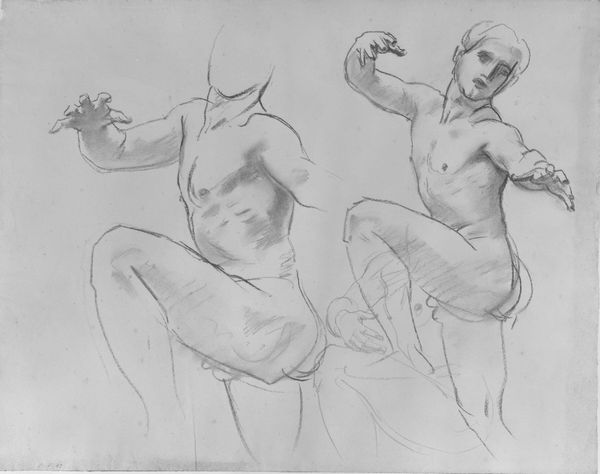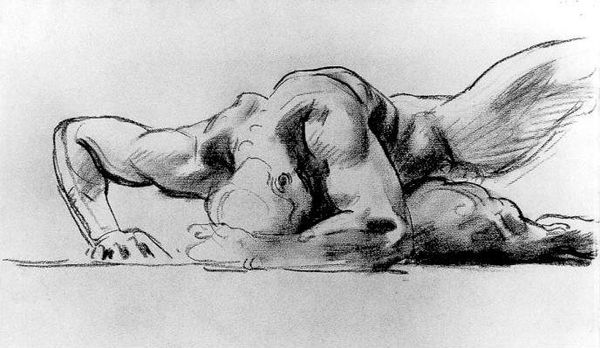
Sketch for the Sorrowful Mysteries, The Carrying of the Cross. Head and Shoulders of a Man
0:00
0:00
drawing, charcoal
#
portrait
#
drawing
#
charcoal drawing
#
charcoal
#
academic-art
Copyright: Public domain
Curator: This is a charcoal sketch by John Singer Sargent, titled "Sketch for the Sorrowful Mysteries, The Carrying of the Cross. Head and Shoulders of a Man". It appears to be a study for a larger work. Editor: My first impression is of profound exhaustion and upward gaze. There's almost a resignation in the posture, the way the head is tilted back. The use of charcoal really accentuates the shadows, adding to the sense of weariness. Curator: Indeed. Sargent was known for his societal portraits, capturing the *zeitgeist* of the Belle Époque, but works like this highlight his ability to distill human emotion down to its essence. Note how Sargent leverages this particular image for "The Carrying of the Cross"; in terms of religious symbols, upward gazing often suggests aspiration. The way that Sargent uses dark lines across the contours to show musculature might recall ancient depictions of mythical gods, creating an ideal even in this very realistic depiction of a figure burdened. Editor: Absolutely. I'm also struck by the doubling of the head, almost like an echo or a premonition. From a cultural standpoint, this might serve as an expression of intense suffering or an identity crisis; are there many interpretations for this "doubling" technique, especially in Sargent's academic portraits? Curator: Doubling serves as a physical reminder to the public about what this symbol can be, about which identity it embodies. While Sargent’s use of doubling isn’t entirely outside of religious art practices of the period, especially during a rise in spiritualism, the effect in the final altarpiece painting in the Boston Public Library, is intended as symbolic not surreal. The technique reinforces what an altarpiece is meant to be as well: doubling down for devotion to Christian belief, sacrifice, and piety. Editor: So, it’s a very specific use, designed to serve the institution requesting it—the commission impacts how and why Sargent employs the doubling technique. Well, considering our own cultural context, a piece like this allows viewers to find shared human vulnerabilities and resilience, no matter the viewer's connection to the underlying biblical narrative. It's a deeply powerful work, particularly due to the charcoal. Curator: The weight of it all, distilled into lines. I see it the same way.
Comments
No comments
Be the first to comment and join the conversation on the ultimate creative platform.
